In a city where Udupi restaurants are ubiquitous, few are aware of the culinary heritage of the coastal town. A new title, The Udupi Kitchen, by mother-daughter duo Malati Srinivasan and Geetha Rao, takes one on a culinary discovery of Udupi
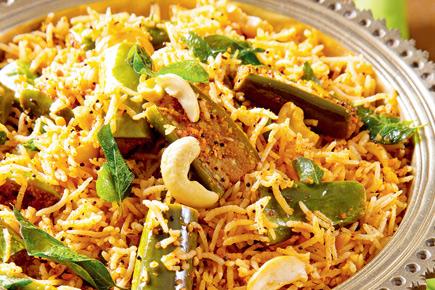
Vangi Bhat (Spicy rice with aubergine)
Malati Srinivasan (who is now 83) began cooking as a young woman. Born into an orthodox Madhwa Brahmin joint family (a community of Karnataka, originally from Udupi), she spent her childhood in Bengaluru, where she watched her aunt Padmavati Bai (affectionately called 'Athi') cook. "Ritual purity restrictions did not permit me to enter the kitchen, so, I watched from the door, and keenly observed the intricacies of the processes involved. As a housewife, I honed my skills by cooking for four children," she reminisces.
ADVERTISEMENT
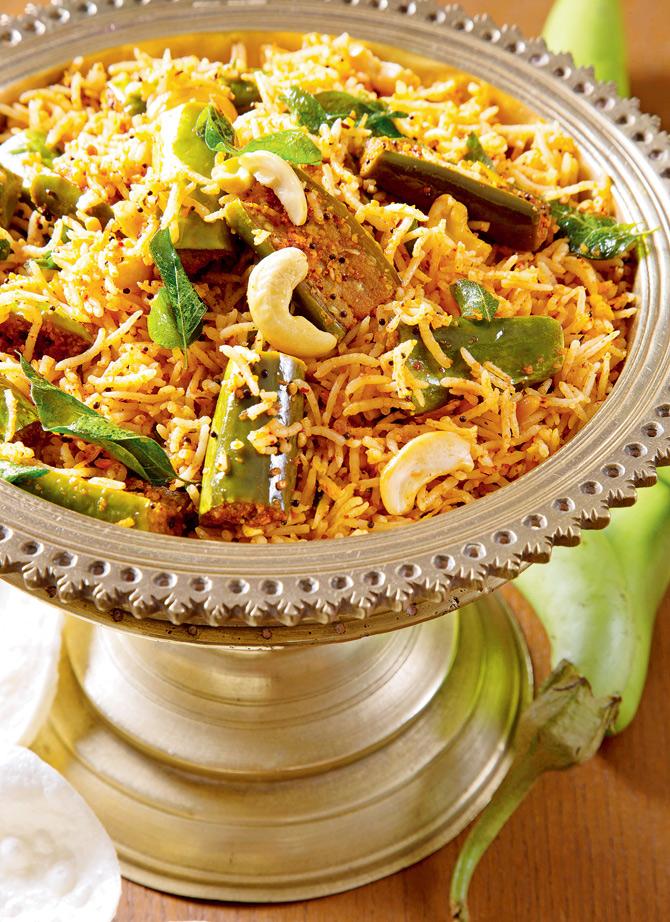
Vangi Bhat (Spicy rice with aubergine)
Booked over Udupi
Decades later, her children coaxed her to pen down the family's traditional recipes, so they could use them. The result is The Udupi Kitchen, a cookbook that Srinivasan co-authored with her daughter Geetha Rao (66). While Srinivasan managed to jot down 175 recipes from memory, approximately 100 of those recipes feature in the book. Through the recipes that span categories such as spice powders, lentils, vegetable preparations, salads, snacks, puddings and confections, the book documents indigenous foods and practices, that were a part of the family and community's food history Srinivasan is a culinary expert whose recipes have been published in various magazines. Rao has three decades of experience in the travel and tourism business and is currently the chairperson of the Crafts Council of Karnataka.
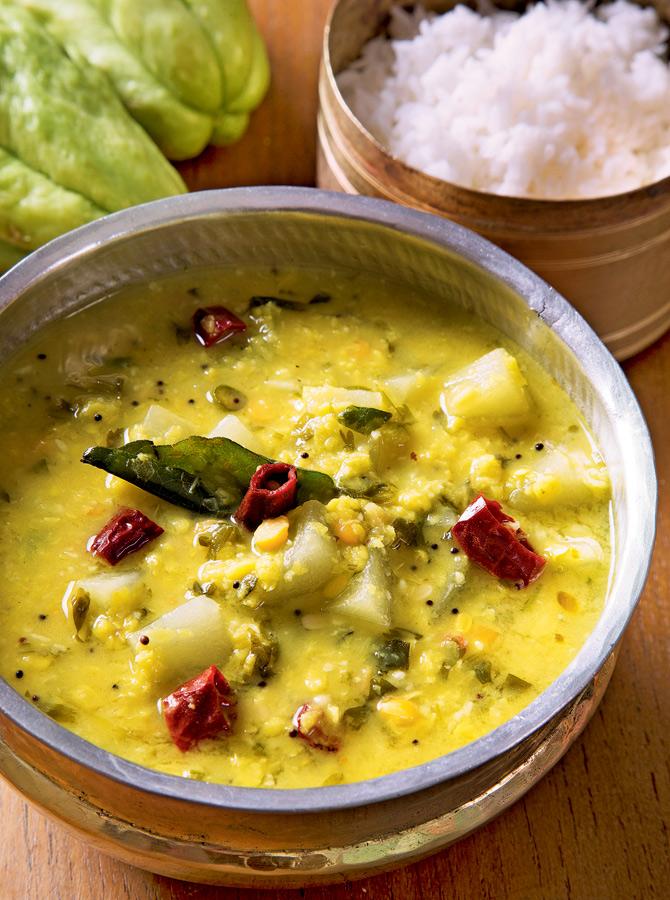
Hesarubele Tovve (Green gram with ridge gourd)
Community chronicles
"Over the years, the community spread out to different cities in Southern India and Maharashtra and some of the recipes took on new names and other changes," explains Srinivasan. Rao emphasises that though the Udupi cuisine is famous for its tiffin or snacks, such as dosa, idli and vada, that are wholesome and inexpensive, it is also much more than just that: "People are not aware that the cuisine has a vast variety and this books aims to fill that lacuna. Many regional cuisines of India remain within the confines of homes. They have not been documented and published. I suppose that is why there is little awareness. However, now, restaurants are increasingly featuring regional fare."
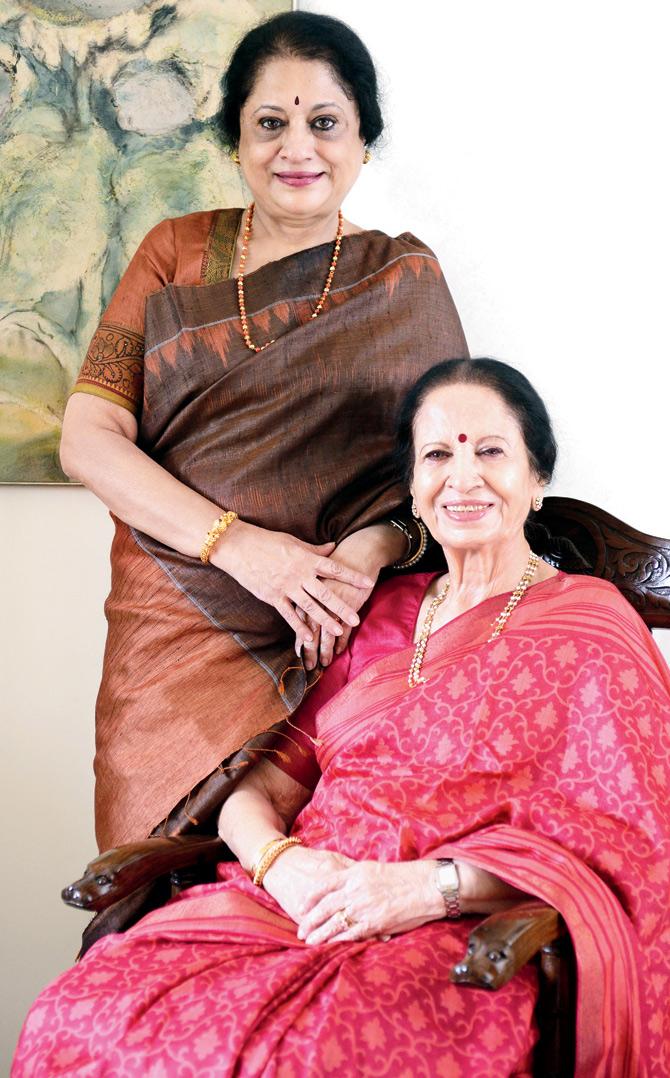
(From left) Geetha Rao and Malati Srinivasan
The mother-daughter duo worked on The Udupi Kitchen for 2.5 years and surmounted challenges such as living in different parts of the globe (Rao lives in Bengaluru while her mother resides in Toronto, Canada). To cater to an Indian and global
audience, the book has a multilingual glossary and uses internationally accepted terminology and measuring aids. Editing and kitchen testing the recipes also took a lot of time. Another challenge was the photoshoot: "Preparing for the shoots by leading food photographer Sanjay Ramachandran was like preparing for a battle; a challenge, yet great pleasure — 36 dishes were shot in four days," recalls Rao.
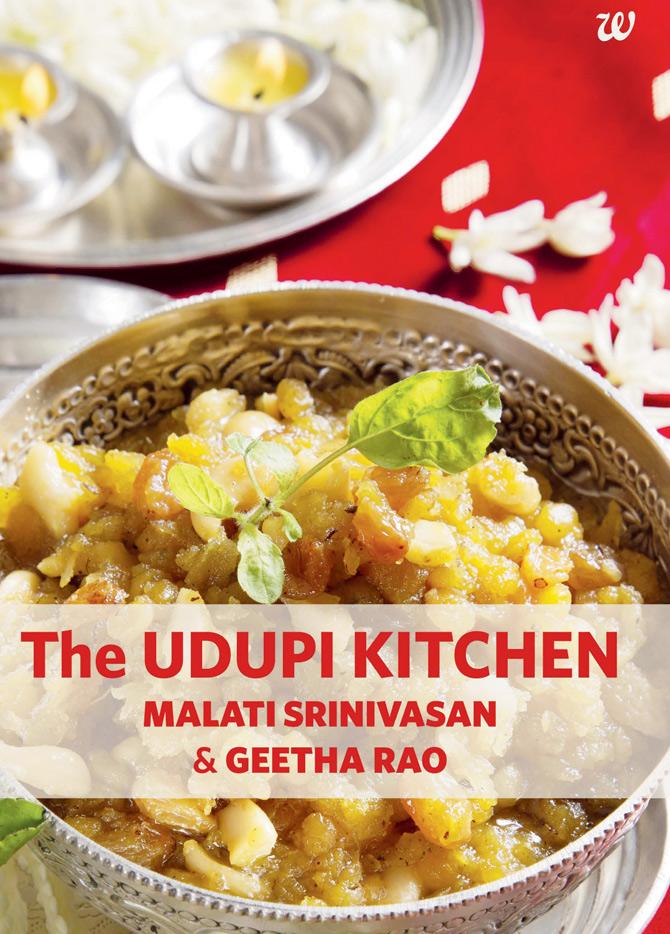
The Udupi Kitchen, Malati Srinivasan and Geetha Rao, Westland, Rs 495. Available at leading bookstores.
What makes Udupi cuisine unique?
>> Udupi/Madhwa cuisine is a major vegetarian cuisine of Karnataka, which includes a combination of cereals, pulses, vegetables and spices.
>> At its core is the food that is grown in the 'Parashurama Kshetra' (land of Parashurama, the axe-wielding sixth avatar of Vishnu), consisting of the narrow fertile coastal plains that lie between the Arabian Sea and the mountain range of the Western Ghats.
>> Traditional Brahmins of the region ate only satvik food or vegetarian fare, without onions and garlic. Tubers like yam, gourd, pumpkin, and different parts of the banana plant were used. Fruits like ripe bananas, mangoes and jackfruits were plentiful. Udupi's presence along the coast meant an abundance of coconuts, which were predominantly used in the cuisine. Desserts often combined coconut milk and jaggery. However, in time, 'English' vegetables like potatoes, tomatoes and carrots began to be used and were integrated into the cuisine.
>> Items like the signature dish, Bisi Bele Huli Anna, Idlis and Dosas, combine cereals and pulses that help to provide a protein component in a vegetarian diet.
Udupis in Mumbai
"Udupi eateries in Mumbai were started by several communities from Udupi such as Shivalli Brahmins, a sub-sect of Madhwa Brahmins (Hollas), Goud Saraswat Brahmins (Nayaks, Kamats, Shanbags) and Bunts (mainly Shettys) from Udupi and surrounding areas. These restaurants serve tiffin (snacks) like dosas, idlis, medu vada and upma. Some restaurants serve meals: rice thalis and meals on banana leaves. Restaurants that serve tiffin serve more or less the same fare. Eateries, like Udupi Sri Krishna Bhavan started by A Rama Nayak in 1942, serve authentic GSB community meals. Their clientele include a large component of non-South Indians and by eschewing onions and garlic in their menus, they cater to Jain customers also," shares Rao.
Kitle Hannu Sippe Gojju
(Orange peels in a sweet, sour and spicy gravy)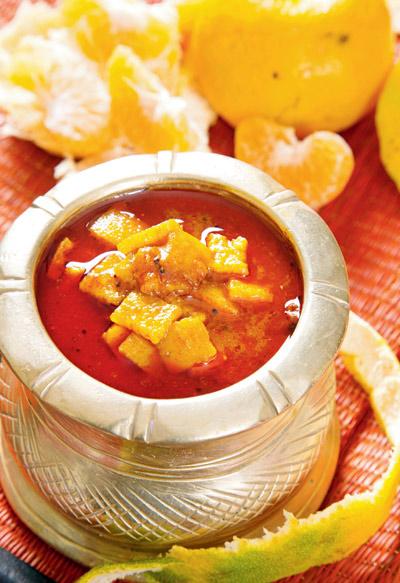
Ingredients
6 loose-jacketed oranges
1/4 cup lightly packed tamarind, pinched into small pieces
1/4 cup oil
1 tsp mustard seeds
1/4 tsp asafoetida powder
1/4 tsp turmeric powder
1 1/2 tsp salt or to taste
2 tbsp gojju pudi or gojju powder
4 tbsp grated jaggery
12 curry leaves
Method
> Wash oranges and peel them. Scrape off and discard the white pith from the peels. Cut the peels into 1/2" pieces.
> Soak tamarind in 1 cup of warm water for about 5 minutes and squeeze out the thick juice into a bowl.
> In a heavy-bottomed pan, heat oil and add mustard seeds. When they splutter, add asafoetida powder and orange peels and fry for about 2 minutes, till soft.
> Add turmeric powder, salt and tamarind juice and boil for about 3 minutes.
> Add gojju powder, jaggery, and curry leaves and simmer on medium heat for another 3 minutes. Remove.
> Serve with hot rice or chapattis.
Gojju Pudi
(Gojju powder for sweet, sour and spicy gravies)
Ingredients
4 cups whole dried red chillies
2 tsp oil
2 tbsp fenugreek seeds
1 tsp asafoetida powder
Method
> Snip the red chillies with a pair of kitchen scissors into 4 pieces each and measure.
> In a wok or kadhai, heat oil. Add red chillies, fenugreek seeds, asafoetida powder and roast on low heat.
> Spread on a large plate and cool.
> Grind into a fine powder.
> Store in airtight containers.
> Use as per recipe to make gojju.
Muchhore
(Rice and roasted gram flour crisps)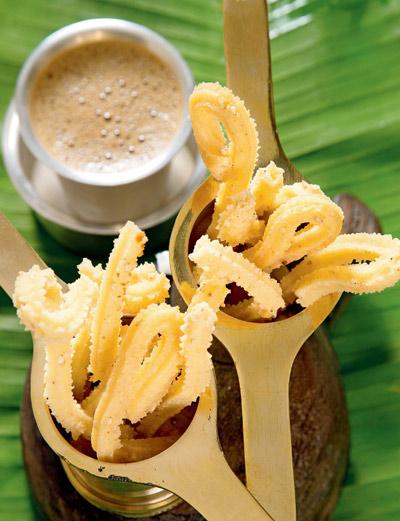
Ingredients
1/2 cup roasted Bengal gram (bhuna chana)
2 cups rice flour
1 tbsp white sesame seeds
1/4 cup unsalted butter, at room temperature
1/8 tsp asafoetida powder
1 tsp salt or to taste
To fry 3 cups oil
Method
> Grind roasted Bengal gram into a fine powder. Sieve.
> In a bowl, combine all ingredients except oil.
> Gradually add up to 1 cup of warm water and knead into a soft dough.
> In a heavy-bottomed wok or kadhai, heat oil.
> Fit a three-holed star disc into a chakli press.
> Form a large orange-sized ball of dough and place the chakli press.
> Press the dough through the disc, directly into the hot oil, using a large circular motion.
> Deep-fry on medium heat, till light golden brown and crisp, turning with a slotted spoon.
> Remove and drain on a paper towel-lined plate.
> Repeat the process till all the dough is used.
> Cool. Gently break into sticks.
> Store in airtight containers.
 Subscribe today by clicking the link and stay updated with the latest news!" Click here!
Subscribe today by clicking the link and stay updated with the latest news!" Click here!






